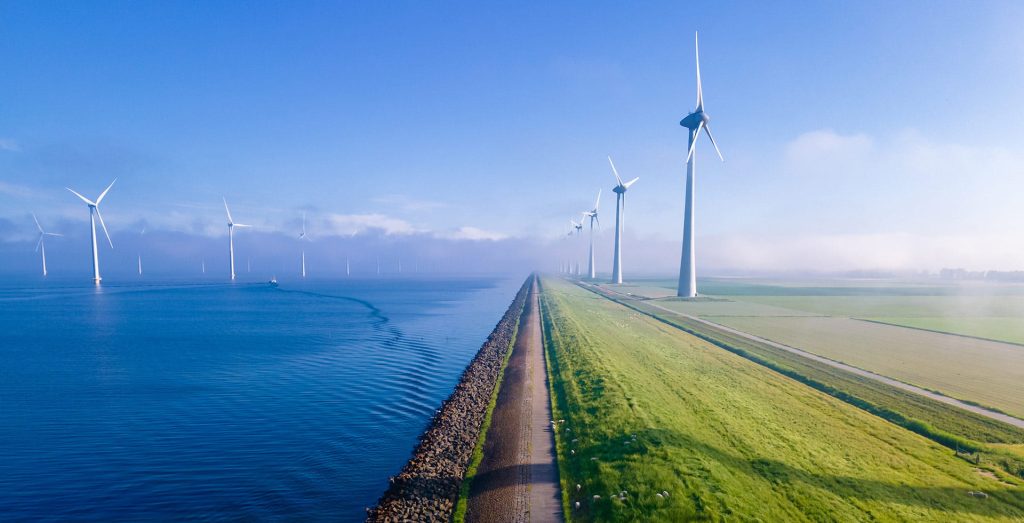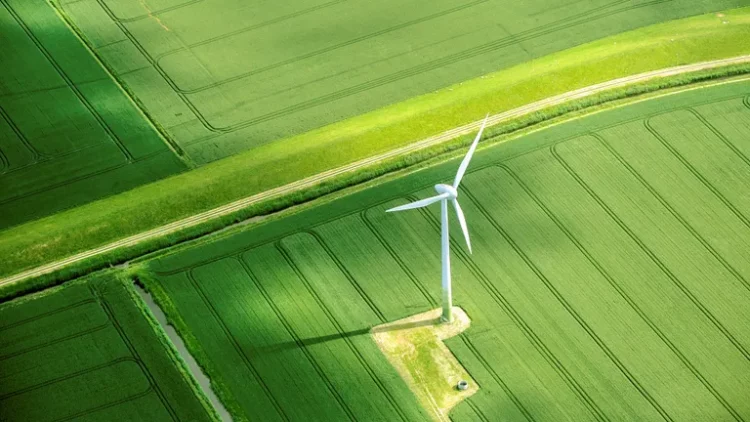In recent years, the push for sustainability has taken center stage across industries worldwide. With growing concerns over climate change and the need to reduce global carbon emissions, businesses are increasingly adopting green technologies and sustainable practices to reduce their carbon footprints. The goal is to move toward carbon neutrality—a state where the net carbon emissions of a business are reduced to zero, either by eliminating emissions or offsetting them through environmental efforts like tree planting or renewable energy use.
This article will examine how businesses from various sectors are embracing green technology, sustainable practices, and innovative solutions to reduce their environmental impact. From tech companies and manufacturing giants to fashion brands and energy providers, the green tech revolution is transforming how businesses operate, fostering both environmental and economic benefits.
1. The Rise of Carbon-Neutral Goals: A Global Movement
The concept of carbon neutrality is no longer a distant ideal but an urgent and tangible goal for many businesses. In the face of growing public and government pressure, companies across industries have committed to carbon-neutral strategies. These initiatives are driven by several factors, including the desire to meet regulatory requirements, align with consumer demand for sustainability, and demonstrate leadership in corporate social responsibility.
One of the most visible examples of this movement is the growing number of businesses setting net-zero emissions targets. For instance, tech giants like Google, Microsoft, and Apple have announced plans to achieve carbon neutrality by investing in renewable energy, improving energy efficiency, and offsetting their remaining emissions. These commitments not only help the companies reduce their environmental footprint but also set a precedent for others to follow.
Many industries, from automotive to fashion, are making similar strides toward sustainability. The automotive industry is rapidly shifting to electric vehicles (EVs), and brands like Tesla are at the forefront of this transition. In fashion, brands such as Patagonia and Nike are adopting sustainable materials, reducing waste, and implementing circular business models to lessen their impact on the planet.
2. Technologies Driving the Green Revolution
At the heart of the green tech revolution are innovations in technology that enable businesses to cut emissions and reduce resource consumption. Many companies are turning to these advanced technologies to drive sustainable growth and achieve their carbon-neutral goals.
1. Renewable Energy Solutions
One of the most significant steps businesses can take to reduce their carbon footprint is transitioning to renewable energy. Solar, wind, hydroelectric, and geothermal energy sources are becoming increasingly cost-effective and widely accessible. By investing in renewable energy systems, businesses can power their operations while drastically reducing their reliance on fossil fuels.
For example, Amazon has committed to using 100% renewable energy by 2025 through investments in solar and wind farms. In addition, companies like Tesla and Siemens are developing and deploying energy storage solutions, such as battery technology, to ensure a stable and sustainable energy supply.
2. Energy Efficiency Technologies
In addition to sourcing clean energy, businesses are investing in energy efficiency technologies that reduce their overall energy consumption. LED lighting, smart thermostats, and automated energy management systems are becoming standard in buildings, warehouses, and factories. These technologies help optimize energy use, lower operating costs, and contribute to overall sustainability.
AI-powered systems are also playing a role in improving energy efficiency. For example, AI algorithms can analyze patterns in energy consumption and make real-time adjustments to reduce waste. In manufacturing, businesses are adopting predictive maintenance technologies to optimize equipment performance and minimize energy consumption, thus improving overall efficiency.
3. Carbon Capture and Storage (CCS)
While the best solution is to prevent carbon emissions in the first place, carbon capture and storage (CCS) technologies offer a way to remove CO2 emissions from the atmosphere. CCS involves capturing carbon dioxide from industrial processes, compressing it, and storing it underground or repurposing it for use in other products. Companies in the energy and heavy industries, such as ExxonMobil and Shell, are investing in CCS projects as a way to reduce emissions that are difficult to eliminate.
Additionally, there is growing interest in direct air capture (DAC), a process that captures CO2 directly from the atmosphere. Although still in the early stages of development, DAC technology holds great potential for businesses seeking to offset their emissions and achieve carbon neutrality.
4. Green Hydrogen
Green hydrogen, produced using renewable energy, is emerging as a promising technology for decarbonizing industries that are difficult to electrify, such as steel production, shipping, and heavy-duty transport. Companies like Siemens and Air Liquide are investing in green hydrogen projects to develop cleaner alternatives to fossil fuels.
By using green hydrogen as a fuel source, businesses can replace traditional carbon-intensive processes with more sustainable options, helping to reduce emissions in industries that rely on fossil fuels. In the coming years, green hydrogen could play a crucial role in achieving carbon neutrality in sectors that are challenging to decarbonize through electrification alone.

3. Sustainable Practices Across Industries
While technology is a driving force behind the green revolution, businesses are also adopting sustainable practices that minimize waste, optimize resource use, and protect ecosystems. These practices are critical in creating a circular economy where products are designed with their entire lifecycle in mind.
1. Circular Economy and Waste Reduction
The circular economy is an economic model that aims to reduce waste and make the most of available resources by reusing, recycling, and remanufacturing products. Businesses are increasingly adopting circular practices in their production processes. IKEA, for instance, is transitioning to a model where products are designed for easy disassembly and reuse. They are also focusing on sustainable sourcing of raw materials, such as recycled plastics and sustainable wood.
Apple has also introduced its own circular economy model with its recycling robot, Daisy, which disassembles old iPhones and recycles valuable materials, reducing the need for virgin resources. Companies in the fashion industry, such as H&M and Levi’s, are embracing sustainable textiles and offering clothing recycling programs to minimize waste and extend the life of garments.
2. Sustainable Sourcing and Supply Chain
Sustainability in business is not limited to internal operations but extends to supply chains as well. Companies are increasingly scrutinizing their suppliers to ensure that they adhere to sustainable sourcing practices and meet environmental standards. Businesses are seeking eco-friendly materials, reducing packaging waste, and adopting green logistics to lower emissions associated with transportation and shipping.
For example, Unilever has made significant strides in ensuring that its products are sourced sustainably, from palm oil to paper packaging. The company is working with farmers and suppliers to implement sustainable agricultural practices and reduce the carbon footprint of its supply chain.
3. Sustainable Transportation
The transportation sector is a significant contributor to carbon emissions, and businesses are increasingly focusing on reducing their logistics-related emissions. One of the key strategies is adopting electric vehicles (EVs) for delivery and transportation fleets. Companies such as UPS and Amazon are investing in EVs to reduce their dependence on fossil fuels.
In addition, the rise of sustainable aviation fuels (SAFs) is paving the way for the aviation industry to reduce its emissions. Airlines like Delta and United Airlines are exploring SAFs as part of their efforts to decarbonize air travel.
4. The Role of Consumers in the Green Tech Revolution
While businesses are taking the lead in adopting carbon-neutral practices, consumer behavior also plays a critical role in driving the green tech revolution. Consumers are increasingly demanding sustainable products and services, and they are willing to support companies that align with their values. This shift in consumer preferences is encouraging businesses to prioritize sustainability and invest in green technologies.
Many companies are responding by offering more eco-friendly products, providing carbon offset programs, and improving transparency around their environmental impact. Consumers are also becoming more engaged in sustainability efforts, from reducing their personal carbon footprints to participating in initiatives such as recycling programs and sustainable fashion movements.
5. Challenges and Future Outlook
While the green tech revolution is gaining momentum, businesses still face several challenges in their quest for carbon neutrality. These include the high costs of adopting new technologies, the complexity of transitioning supply chains to more sustainable practices, and the need for supportive government policies and regulations. Additionally, the pace of technological development in areas like carbon capture and green hydrogen needs to accelerate to make these solutions more scalable and cost-effective.
However, the future of the green tech revolution looks promising. As more companies take bold steps toward carbon neutrality and adopt innovative technologies, the global economy will increasingly shift toward sustainability. Governments, businesses, and consumers will need to work together to ensure that this transition is both successful and equitable.
6. Conclusion: A Green Future Ahead
The green tech revolution is reshaping industries and accelerating the transition to a carbon-neutral future. By embracing renewable energy, energy-efficient technologies, sustainable sourcing, and circular economy practices, businesses are reducing their environmental impact and leading the charge toward a more sustainable world. While challenges remain, the rapid advancements in green technology and the growing demand for sustainability are paving the way for a cleaner, more sustainable future. As more businesses adopt these practices, the global economy will evolve, and a greener, more sustainable world will emerge.


















































Discussion about this post